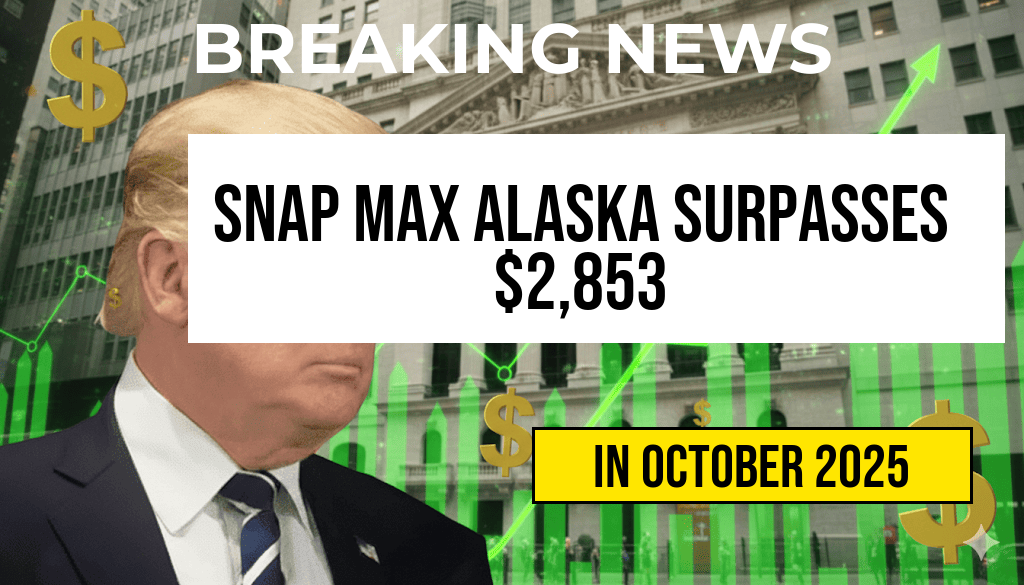In Alaska, the Supplemental Nutrition Assistance Program (SNAP) provides recipients with a maximum benefit that has recently surpassed $2,853 for a six-month period. This figure starkly contrasts with the typical $1,421 monthly benefit seen in many U.S. states, highlighting the significant disparities in cost-of-living and economic support across the country. Alaska’s higher maximum reflects the state’s elevated living expenses, particularly in areas such as housing, transportation, and food. For residents in the Lower 48 states, this discrepancy underscores the challenges of translating federal assistance into equivalent purchasing power. As inflation continues to impact household budgets, understanding the nuances of SNAP benefits across different regions becomes vital for policymakers and recipients alike.
Understanding SNAP and Regional Variations
What is SNAP?
The Supplemental Nutrition Assistance Program, formerly known as food stamps, is a federal aid initiative designed to help low-income individuals and families purchase nutritious food. The program’s benefit levels are determined based on factors such as household size, income, and local living costs. While the federal government sets the maximum benefit amounts, states often have the flexibility to adjust or supplement these figures depending on regional needs.
Regional Cost-of-Living Differences
Alaska’s unique geographic and economic landscape results in higher costs for essentials like housing, transportation, and groceries. The state’s cost-of-living index consistently ranks among the highest nationwide, prompting adjustments to federal assistance programs. Consequently, the maximum SNAP benefit in Alaska exceeds the national average to help offset these expenses. Conversely, many states in the continental U.S. maintain lower maximum benefits that reflect their comparatively modest living costs.
Breakdown of Benefits: Alaska vs. Lower 48 States
| Region | Maximum Six-Month Benefit | Monthly Equivalent |
|---|---|---|
| Alaska | $2,853 | $475.50 |
| Average Lower 48 State | $8,526 | $1,421 |
While the figures suggest that Alaska’s benefits are significantly higher, they also reflect the necessity of larger budgets to meet living costs. The gap between Alaska’s maximum benefits and those available in other regions can influence household resilience, especially during economic downturns or periods of inflation.
Factors Contributing to Higher Benefits in Alaska
- Housing Costs: Alaska’s remote locations and limited housing supply drive prices upward, especially in urban centers like Anchorage and Fairbanks.
- Transportation Expenses: The need for air travel or long drives increases transportation costs for residents, impacting overall household budgets.
- Food Prices: Import dependence and logistical challenges contribute to higher grocery prices, making assistance critical for food security.
- Climate and Infrastructure: Harsh weather conditions require additional spending on heating and maintenance, further elevating living expenses.
Implications for Recipients and Policy Considerations
Recipients in Alaska often rely heavily on SNAP benefits to bridge the gap between income and living costs. The elevated maximum benefit can provide a crucial safety net but may still fall short of covering all expenses, especially when inflation drives up prices in sectors like housing and fuel. For residents in the Lower 48, the disparity emphasizes the importance of regional adjustments and the potential need for supplemental assistance to ensure food security.
Policy debates continue regarding how to calibrate SNAP benefits to better reflect regional economic realities. Some advocates argue that increasing national standards or providing region-specific supplements could enhance the program’s effectiveness, particularly as inflation and housing prices climb nationwide. Meanwhile, understanding regional disparities helps illuminate the lived experiences of low-income families across the country, emphasizing the importance of tailored support systems.
Additional Resources
Frequently Asked Questions
What is SNAP Max in Alaska and how does it compare to the Lower 48?
SNAP Max in Alaska can exceed $2,853 for six months, demonstrating significantly higher benefits compared to the $1,421 average in the Lower 48 states. This difference is primarily due to the higher cost of living and regional adjustments.
Why does SNAP benefit in Alaska tend to be higher than in the Lower 48?
The higher SNAP benefits in Alaska are intended to offset the elevated cost of living and regional expenses. The program adjusts benefit amounts regionally to ensure recipients can meet basic needs despite geographic disparities.
How is the SNAP benefit amount determined in Alaska?
The SNAP benefit amount in Alaska is calculated based on household income, size, and regional cost adjustments. Alaska’s higher regional factor increases the maximum benefit, which can surpass the $2,853 mark for a six-month period.
What factors contribute to the lower SNAP benefits in the Lower 48 states?
In the Lower 48, SNAP benefits are generally lower because of the lower regional cost adjustments. The benefit amounts are based on regional standards that reflect local living expenses, which are typically less than in Alaska.
Can recipients in the Lower 48 expect to receive benefits comparable to Alaska’s SNAP Max?
Recipients in the Lower 48 are unlikely to receive benefits comparable to Alaska’s SNAP Max, as benefits are tailored to regional costs. However, program adjustments aim to provide adequate support based on local economic conditions.










